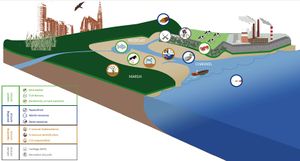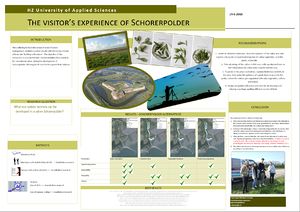PR 00190: verschil tussen versies
Geen bewerkingssamenvatting |
Geen bewerkingssamenvatting |
||
| Regel 17: | Regel 17: | ||
|Project type=Standaard | |Project type=Standaard | ||
|Name=Ecosystem services in the Schorerpolder | |Name=Ecosystem services in the Schorerpolder | ||
|Start date= | |Start date=2019/02/01 | ||
|End date= | |End date=2019/07/01 | ||
|Summary=Create opportunities for new ecosystem services in a polder | |Summary=Create opportunities for new ecosystem services in a polder | ||
| Regel 28: | Regel 28: | ||
|Show summary=Ja | |Show summary=Ja | ||
|Show navigation tree=Ja | |Show navigation tree=Ja | ||
|Create process and content pages=Nee | |||
|Show new page button=Nee | |||
|Show sub projects=Ja | |Show sub projects=Ja | ||
|Show participants=Ja | |Show participants=Ja | ||
|Show sources=Ja | |Show sources=Ja | ||
}} | }} | ||
Versie van 23 mei 2018 13:13
Between Oost-Souburg and the port of Zeeland Seaports the area is used for agricultural purposes. One the polders in this part of Walcheren is the Schorerpolder, the owner of the polder is Zeeland Seaports (ZSP). ZSP is planning to use the polder for nature compensations, as part of a port development plan. The main idea is to bring seawater back into the polder by constructing an opening in the dyke. In that way the polder of 28 ha, can develop in a low dynamic intertidal habitat, an important habitat for the Western Scheldt which is under continues pressure.
In this project you will work in a team of students from different disciplines (civil engineering, delta management, and aquatic eco-technology), under supervision of a team of experts form the BwN research group and external partners. The task is to identify the present ecosystem services in the Schorerpolder, and also quantify these services. Secondly you will determine new ecosystem services for different development (four) plans in the polder. You will be asked to think about opportunities to increase the ecosystem services by using eco technological principle. The development of the plans are part of the group work of the whole team, in close collaboration with the client (ZSP). You will be ask to use your creativity for the development of ambitious, but feasible polder designs.
Research type: field research, desk analysis (GIS), stakeholder meetings
Research level: minor, internship or graduation bachelor thesis project
Prerequisite: interest in ecology, morphology, policy, natural compensation, Natura2000
Partners: WMR, NIOZ, Deltares, Scheldestromen and Zeeland Seaports
Client: Joost Stronkhorst (HZ)


